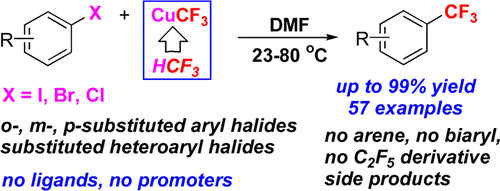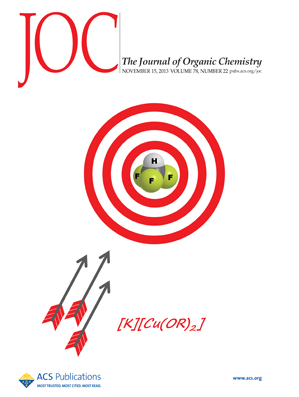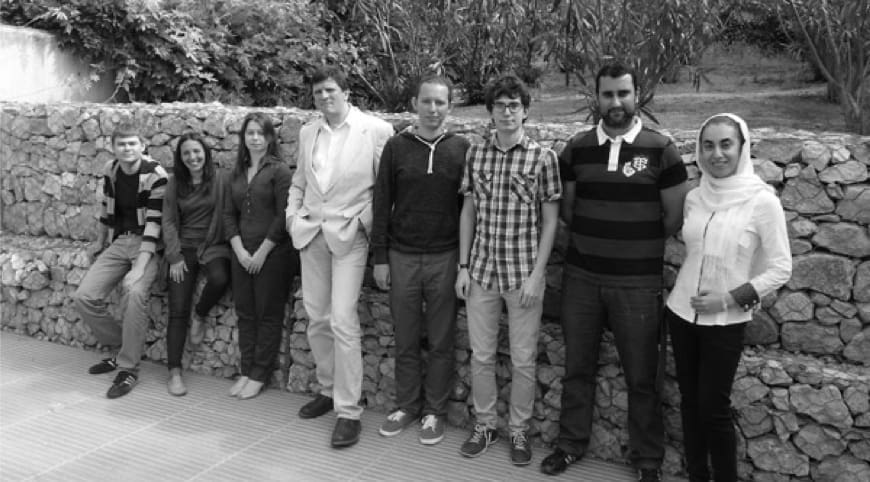Trifluoromethylation of Aryl and Heteroaryl Halides with Fluoroform-Derived CuCF3: Scope, Limitations, and Mechanistic Features
Fluoroform-derived CuCF3 recently discovered in our group exhibits remarkably high reactivity toward aryl and heteroaryl halides, performing best in the absence of extra ligands. A broad variety of iodoarenes undergo smooth trifluoromethylation with the “ligandless” CuCF3 at 23-50 °C to give the corresponding benzotrifluorides in nearly quantitative yield. A number of much less reactive aromatic bromides also have been trifluoromethylated, including pyridine, pyrimidine, pyrazine, and thiazole derivatives as well as aryl bromides bearing electron-withdrawing groups and/or ortho substituents. Only the most electrophilic chloroarenes can be trifluoromethylated, e.g., 2-chloronicotinic acid. Exceptionally high chemoselectivity of the reactions (no side-formation of arenes, biaryls, and C2F5 derivatives) has allowed for the isolation of a large number of trifluoromethylated products in high yield on a gram scale (up to 20 mmol). The CuCF3 reagent is destabilized by CuX coproduced in the reaction, the magnitude of the effect paralleling the Lewis acidity of CuX: CuCl > CuBr > CuI. While SNAr and SRN1 mechanisms are not operational, there is a well-pronounced ortho effect, i.e., the enhanced reactivity of ortho-substituted aryl halides 2-RC6H4X toward CuCF3. Intriguingly, this ortho-effect is observed for R = NO2, COOH, CHO, COOEt, COCH3, OCH3, and even CH3, but not for R = CN. The fluoroform-derived CuCF3 reagent and its reactions with haloarenes provide an unmatched combination of reactivity, selectivity, and low cost.

A. Lishchynskyi , M. A. Novikov , E. Martin , E. C. Escudero-Adán , P. Novák , V. V. Grushin
J. Org. Chem. 2013, 78, 11126-11146
DOI:
Go to the journal

Let's create a brighter future
Join our team to work with renowned researchers, tackle groundbreaking
projects and contribute to meaningful scientific advancements




















